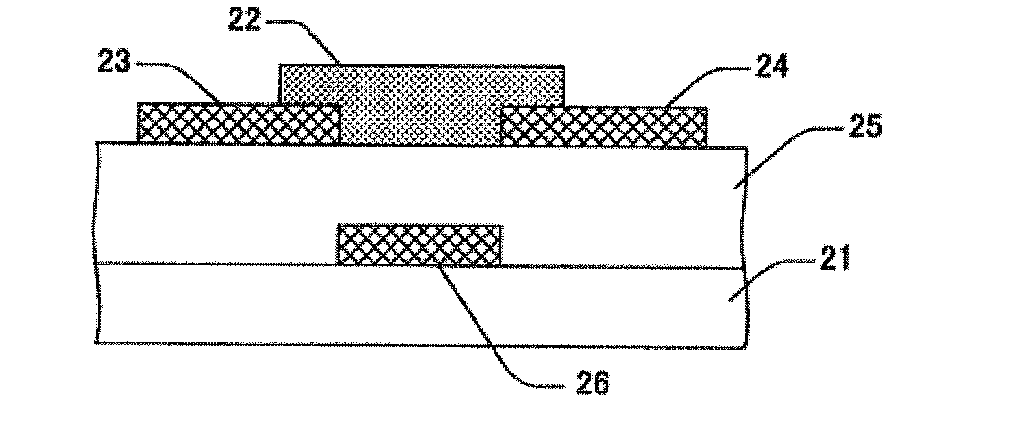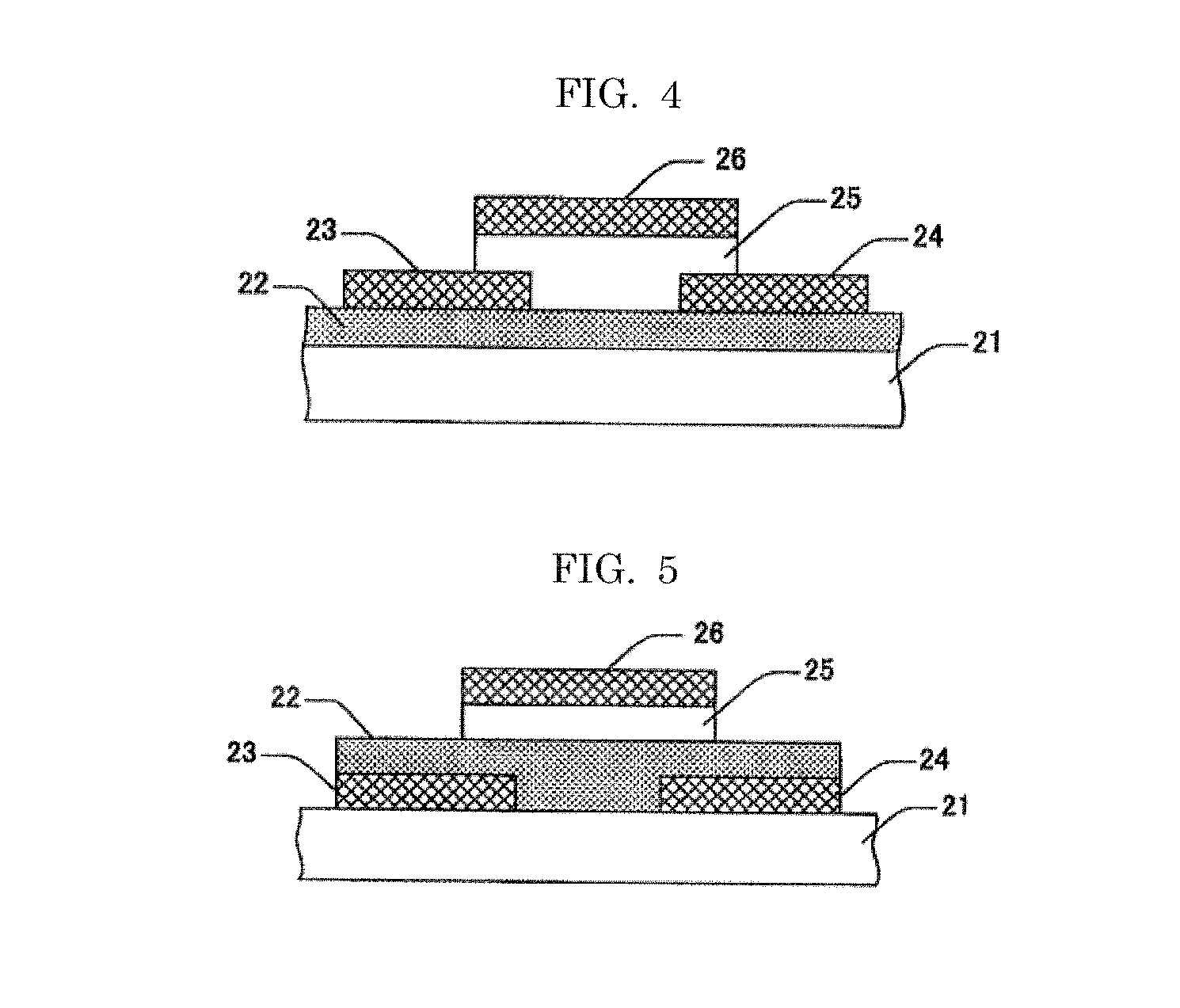P-type oxide, composition for producing p-type oxide, method for producing p-type oxide, semiconductor element, display element, image display device, and system
a technology of p-type oxide and composition, applied in the field of p-type oxide, can solve the problems of difficult control of cu and oxygen content, difficulty in achieving excellent p-type electric conductivity, and difficulty in controlling properties, so as to achieve sufficient electric conductivity, control electric conductivity, and excellent properties
- Summary
- Abstract
- Description
- Claims
- Application Information
AI Technical Summary
Benefits of technology
Problems solved by technology
Method used
Image
Examples
examples
[0252]Examples of the present invention will be explained hereinafter, but these examples shall not be construed to as limit the scope of the present invention in any way.
examples 1 to 6
Preparation of Cu—Sb Oxide (Amorphous) Film
[0253]Inks for Cu—Sb oxide (compositions for producing a p-type oxide), each of which had the formulation and Sb / Cu molar ratio depicted in Table 1, were prepared. Specifically, a copper neodecanoate (8.28% by mass) toluene solution and a triphenyl antimony (5.83% by mass) toluene solution were blended in accordance with the formulation depicted in Table 1 so that a ratio of Cu moles in a resulting ink to Sb moles in the resulting ink (Sb / Cu molar ratio) was to be 2.5%, 6.3%, 12.5%, 18%, 25%, and 100%, respectively, to thereby prepare 6 different inks for Cu—Sb oxide (compositions for producing a p-type oxide). Note that, 0.5 mL of toluene was added to the formulation depicted in Table 1.
[0254]Next, the ink for Cu—Sb oxide was applied onto a glass substrate by spin coating. After drying the ink for 1 hour at 120° C., the ink was baked for 3 hours at 250° C. while applying light emitted excimer lamp (wavelength: 222 nm) in a flow of oxygen g...
example 7
Production of Cu—Sb Oxide Film (Amorphous)
[0271]In 10 mL of ethylene glycol, 2.42 g (corresponding to 10 mmol) of copper nitrate trihydrate was dissolved to prepare a copper raw material solution. Moreover, 2.29 g (corresponding to 10 mmol) of antimony chloride was dissolved in 10 mL propylene glycol to thereby prepare an antimony raw material solution.
[0272]The copper raw material solution (5 mL) and the antimony raw material solution (0.9 mL) were mixed and stirred to thereby prepare an ink for Cu—Sb oxide (composition for producing a p-type oxide). A ratio of Cu moles in the ink to Sb moles in the ink (Sb / Cu molar ratio) was 18%.
[0273]Next, a glass substrate was coated with the ink for Cu—Sb oxide by spin coating. After drying the ink at 120° C. for 1 hour, the ink was baked at 250° C. for 3 hours while applying light emitted from an excimer lamp (wavelength: 222 nm) in a flow of oxygen gas, to thereby form a Cu—Sb oxide film (p-type oxide film). The Sb / Cu molar ratio in the obta...
PUM
 Login to View More
Login to View More Abstract
Description
Claims
Application Information
 Login to View More
Login to View More - R&D
- Intellectual Property
- Life Sciences
- Materials
- Tech Scout
- Unparalleled Data Quality
- Higher Quality Content
- 60% Fewer Hallucinations
Browse by: Latest US Patents, China's latest patents, Technical Efficacy Thesaurus, Application Domain, Technology Topic, Popular Technical Reports.
© 2025 PatSnap. All rights reserved.Legal|Privacy policy|Modern Slavery Act Transparency Statement|Sitemap|About US| Contact US: help@patsnap.com



